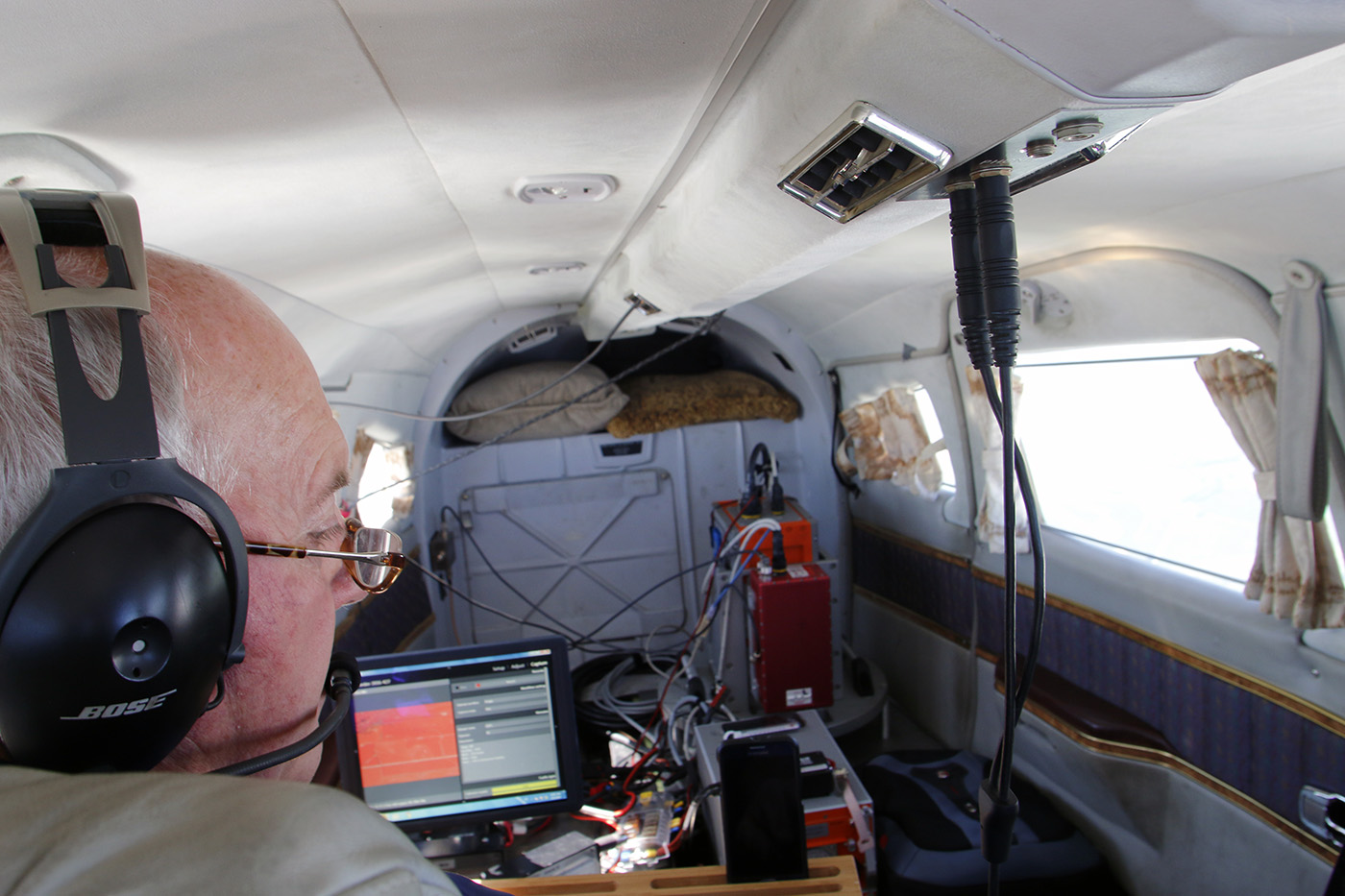
It’s an unassuming piece of equipment installed in the back of an unassuming airplane — what would normally be a six-seat Piper Saratoga, reduced to two traditional seats and one turned backward, the curtains darkened and threadbare with age.
But it is that unassuming machine, an imaging fluorometer, combined with equally unassuming hyperspectral and thermal imaging machines that gives research scientists with the Center for Advanced Land Management Information Technologies at the School of Natural Resources the ability to detect when plants, including crops, are stressed.
This airborne research instrument, one of few in the world, according to John Gamon, CALMIT’s quantitative remote sensing scientist, is an important piece of remote-sensing research. It fills a data gap between that which is gathered at ground level and that through satellites, and it provides an important way to validate data sets at the scale of management units, such as entire farms.
But the technology is so new that globally standardized ways to handle the massive data sets haven’t yet been determined, thus prompting the need for an airborne fluorescence workshop involving experts in the field.
CALMIT will host a four-day workshop Sept. 26 to 29 on East Campus that is sponsored by the European Space Agency, Fluorescence Explorer Advisory Group and University of Nebraska-Lincoln, along with additional support from several campus units including the School of Natural Resources, Agronomy and Horticulture, the Agricultural Research Division and the Office of Research and Economic Development. The Tuesday session beginning at 9 a.m. at the East Campus union will be open to the campus community. Science talks are scheduled throughout the day, and research posters will be available in Hardin Hall during the week.
Days two and three of the workshop are by invitation only, and will include key researchers from around the world whose focus is on solar-induced chlorophyll fluorescence (SIF). SIF refers to a weak glow of light not visible to the naked eye. Plants under stress — from lack of water or from cold, for example — change their fluorescence emission, which imaging fluorometers can detect and record.
Geoscientists, such as Rick Perk of CALMIT, collect SIF images by flying transects of landscapes, often over weeks or years. Those data are then analyzed and compared to previously recorded datasets for interpretation. The CALMIT plane is able to simultaneously collect independent data on plant pigment composition and vegetation structure, which helps in the interpretation of SIF patterns.
Gamon has used optical methods to study vegetation for most of his career, and most recently used pigment signals to demonstrate that evergreen trees, much like deciduous ones, go dormant during the winter months. Other conference participants are using fluorescence technology to show patterns of global photosynthesis and crop stress.
Workshop discussions will focus on what science questions and applications solar-induced fluorescence can answer, how current instruments from different manufacturers compare, and how scientists can improve data- and knowledge-sharing to advance the field.
“Solar-induced fluorescence offers to revolutionize remote assessment of plant photosynthesis, productivity and stress, but we really have to learn what this new technology can and can’t do, and this meeting will be an important step in that direction,” Gamon said.
The final day of the workshop includes a field trip to Silverhawk Aviation to see university’s plane, which has been retrofitted to accommodate the equipment; a trip to the Eastern Nebraska Research and Extension Center at near Mead; and farm tour and dinner at Lakehouse Farm and the Prairie Plate, a farm-to-table restaurant near Waverly.
Those interested in participating can register for the workshop at go.unl.edu/sifworkshop.
For more information, contact Gamon at jgamon@unl.edu or Jackie Loomis at jloomis3@unl.edu.
For more information about CALMIT, click here. For more on its airborne program, click here.
More details at: http://calmit.unl.edu/welcome